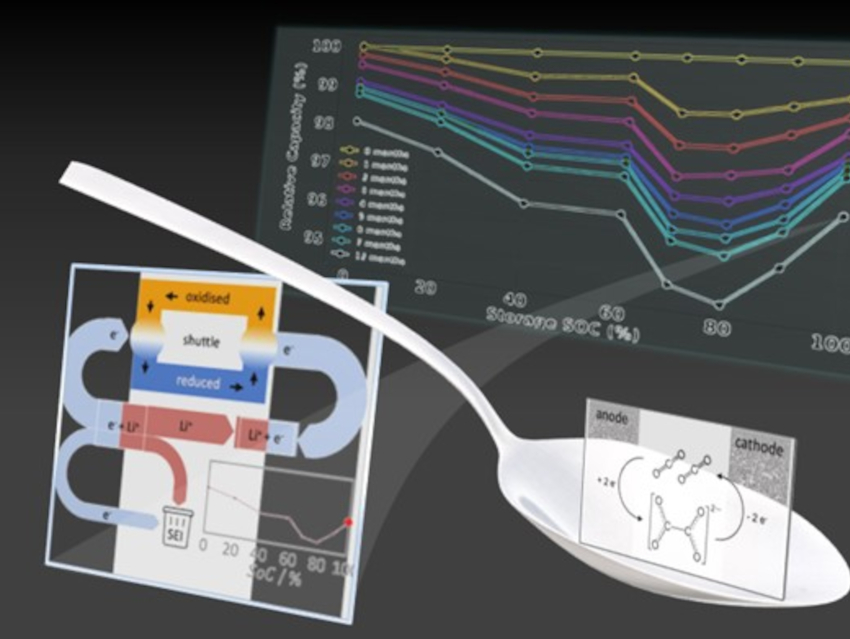Lithium-ion batteries degrade even when they are not in use, reducing their capacity. This type of degradation actually dominates the aging of batteries in many electric cars, given that they can be parked over 90 % of the time—possibly more during the COVID-19 pandemic.
To better understand what conditions could slow battery aging, Alana Zülke, Lancaster University, The Faraday Institution, Didcot, and Altelium Ltd., Buckingham, all UK, and colleagues have performed a systematic investigation of the effect of state-of-charge (SoC) and temperature on Li[Ni1-x-yCoxAly]O2 (NCA)|Gr-SiOx 21700 cells (Gr = graphite)—a commercial battery widely used in electric cars. The team used used 43 identical battery cells and, after an initial screening, stored different cells at either 25 °C, 40 °C, or 50 °C and at SoC of 0 %, 20 %, 40 %, 60 %, 70 %, 80 %, 90 %, or 100%. The cells were stored for a year and their capacities were measured monthly.
The team found that there is a “spoon-shaped” profile for the capacity fade as a function of the SoC when the batteries are idle. Cells at 100 % SoC have a better capacity retention than cells stored at 80 or 90 % SoC, but can develop micro-short circuits when exposed to temperatures over 40 °C. These findings are interesting considering that users typically keep their devices at high levels of SoC, and they are particularly relevant to understanding the degradation of batteries in locations where temperatures can get as high as 40 °C, a condition easily met in many places around the world. The work could be used to inform better use strategies and prediction models for battery life, ultimately reducing the environmental impact of the batteries.
- High‐Energy Nickel‐Cobalt‐Aluminium Oxide (NCA) Cells on Idle: Anode‐ versus Cathode‐Driven Side Reactions,
Alana Zülke, Yi Li, Peter Keil, Robert Burrell, Sacha Belaisch, Mangayarkarasi Nagarathinam, Michael P. Mercer, Harry E. Hoster,
Batteries Supercaps 2021.
https://doi.org/10.1002/batt.202100046




